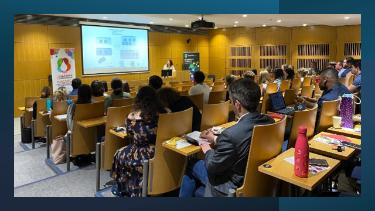Timing Matters: Pulses of EGF Hormone Trick Cells Into Becoming Neurons
Cells are the smallest functional units in living systems such as humans. In order to develop from a simple embryo-cell into all different types of cells in the body, cells have to grow and divide (proliferate) and then specialise (differentiate), for example by turning into a neuron – a building block of our nervous system. Understanding the mechanisms for determining cell fate is a significant challenge, with considerable implications for our understanding of what happens when these mechanisms go awry, such as in cancer or abnormal foetal development.
A particularly convenient system to study differentiation and proliferation under laboratory conditions are so-called PC12 cells. For over two decades it has been known that PC12 cells proliferate when treated with the hormone EGF, but differentiate when treated with another hormone, NGF. But new research reveals that the story is not as clear cut. A team led by Prof. Olivier Pertz consisting of experimentalists at the University of Basel and Seoul National University, and mathematical modellers at SBI has now shown that the PC12 cells can differentiate even in response to EGF, the growth factor typically used to stimulate cell proliferation.
The insight came from understanding the dynamics of biochemical reactions that control the balance between proliferation and differentiation. The reactions form a connected network that could be understood with the mathematical model developed by SBI’s Dirk Feyand Maciej Dobrzy?ski. The model predicted the way to drive cells towards differentiation regardless of which hormone was applied. The key finding that enabled cell differentiation in the presence of EGF was to deliver it repeatedly in pulses of, for example, a 3-minute EGF pulse followed by a 20-minute break.
The application of hormone pulses was possible thanks to collaborators from Seoul National University who manufactured ingenious microfluidic devices programmable to any type of pulsing pattern. The results revealed that individual cells behave strikingly different, but also that they can be harmonised to reach the same endpoint – differentiation – by applying the correct pulsing pattern, as predicted by the model.
The research highlights the importance of interdisciplinary research where high quality experimental data enable development of predictive mathematical models, which in turn help to reveal salient features of the living system and to suggest experiments with interesting outcomes. Commenting on the research, Nils Bluethgen, Professor of Computational Modelling in Medicine at the Charite University Hospital in Berlin, reminds that the idea to challenge networks with very defined input patterns is comparable to how engineers would probe an electrical circuit. "The arena is open to use these approaches to unravel how different network features like feedbacks and feed?forward loops in signaling interact to encode specific signals", says Prof. Bluethgen.
Frequency modulation of ERK activation dynamics rewires cell fate.
Ryu H, Chung M, Dobrzy?ski M, Fey D, Blum Y, Lee SS, Peter M, Kholodenko BN, Jeon NL, Pertz O
Mol Syst Biol (2015) 11: 838
News and Views: Signaling output: it's all about timing and feedbacks
Blüthgen N
Mol Syst Biol (2015) 11: 843
Maciej Dobrzynski is a visiting research fellow at AstraZeneca UK working on a joint project with SBI on identifying mechanisms of drug resistance in cancer, funded by a Science Foundation Ireland Industry Fellowship. Dirk Fey is a junior group leader at SBI who is working on a holistic, quantitative understanding of cancer related signalling networks across the scales ranging from the intracellular to the organism level.

